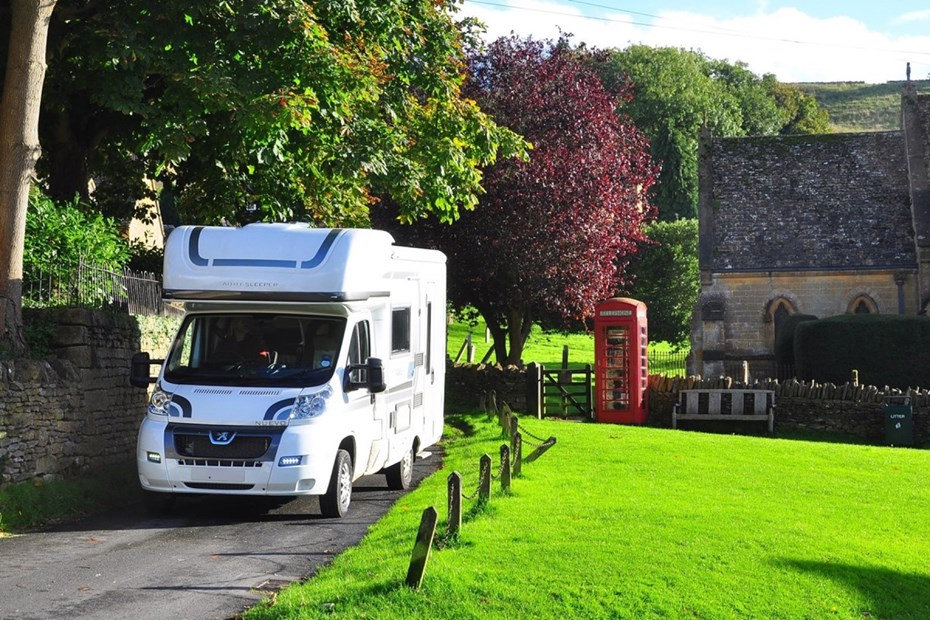There are so many motorhomes and campervans to choose from that working out which one is best for you isn’t easy. Sometimes, just telling the different types apart can be tricky – especially when many of them use the same base vehicles as a starting point.
However, you can start narrowing down your options by working out which one of the three main types will suit your needs. They are the van conversion, the coachbuilt and the A-Class. They’re quite distinct from each other and come with their own sets of advantages and disadvantages.
In this guide, we’re going to explain exactly what those three types are, how you can spot them and the pros and cons of owning and using one.
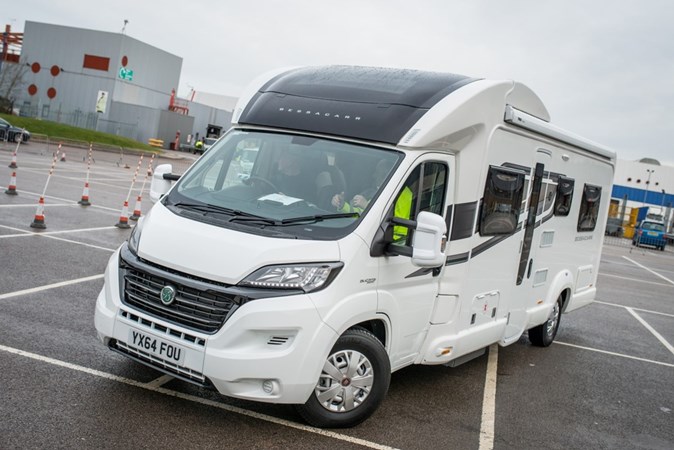
A note on driving licences
If you got your driving licene after 1 January 1997, you can only drive vehicles that have a maximum gross vehicle weight (GVW) of 3,500kg – that’s inclusive of passengers, fuel, luggage and equipment. If you got your licence before 1997, you can drive vehicles with a GVW of 7,500kg.
There are motorhomes of all three types that weigh more 3,500kg. If you want one and your licence doesn’t entitle you to drive a vehicle that heavy, you’ll have to upgrade it to category C1 by getting some training and taking a driving test. You should familiarise yourself with motorhome speeds limits, as well.
You can identify the heavier motorhomes quite easily. Rear-wheel-drive ones typically have a pair of back wheels on each side; front-wheel-drive ones have a girder-like rear axle and sit oddly high at the back. Four-wheel-drive ones almost certainly have a GVW over 3,500kg.
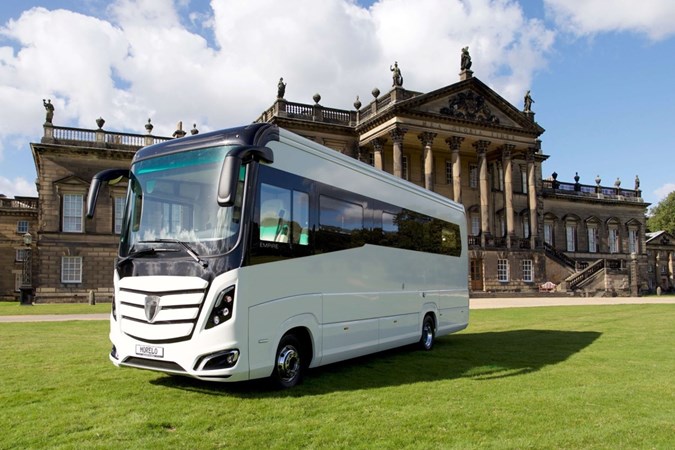
Van conversion motorhomes
Pros:
- Generally cheaper to buy and maintain
- Smaller size
- Usually under 3,500kg
Cons:
- Can be poorly insulated
- Space is at a premium
As the name suggests, a van conversion motorhome started life as a panel van and has been fitted out for living in. The company that carried out the conversion won’t have made any significant alterations to the bodywork, other than creating openings for windows, vents and utilities. Some are barely distinguishable from a delivery van.
The line between a campervan and a van conversion motorhome is very and many people don’t make a distinction at all. If it’s based on a panel van, they call it camper. But, if you do make distinction, it basically comes down to size. The Volkswagen California, for instance, is a campervan that’s based on the VW Multivan MPV. The Volkswagen Grand California, on the other hand, is a motorhome based on the big VW Crafter van.
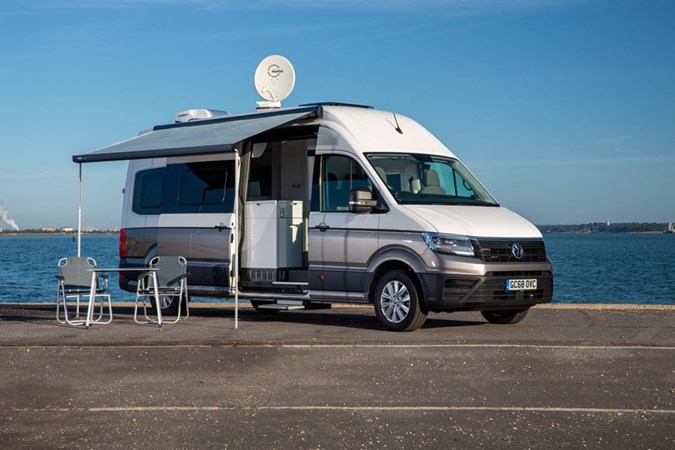
Advantages
The main advantage of van conversions is that they can be easier to drive than other forms of motorhome. Though you do still have to bear the thing’s length when manoeuvring and parking. The vehicle’s height counts out restricted car parks, as well.
Most van conversions also have a GVW of less than 3,500kg, so they’re accessible to more drivers. They’re the perfect basis for creating a DIY camper van, as well. Many people just prefer the look of them, as well.
Disadvantages
Van conversions aren’t the most spacious of motorhomes. The sides slope in, the body is relatively narrow and they can be quite short. Though they’re a huge step up from a campervan with such niceties as a toilet, the layout is usually compromised in some way.
The kitchen area may be small and lacking equipment like a microwave or full fridge-freezer. There’s unlikely to be a separate shower cubicle either; instead, the shower, toilet and sink will be in a single wet room-style space. The number of berths (beds) is usually lower, most van conversions offering no more than four, and the space isn’t exactly generous for adults.
Van conversions can get cold, especially in winter because metal isn’t a good insulator. Cheaper conversions just have single glazing, adding to the issue. So you may have to incur the extra expense of running a night heater.
Counterintuitively, van conversions are usually more expensive than coachbuilts, as well. That’s because the conversion process is very labour-intensive. Coachbuilts are much quicker and easier to produce.
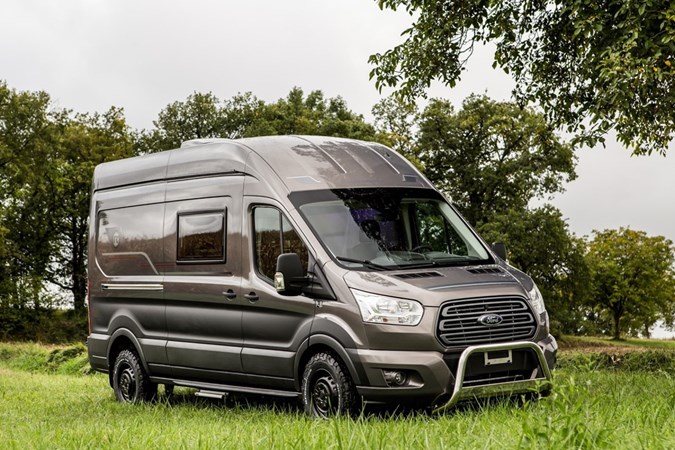
Coachbuilt motorhomes
Pros:
- Vast choice of models, layouts and prices
- More space efficient than van conversions
- Can sleep six or more
Cons:
- Separate cab wastes space
- More difficult to drive
A coachbuilt motorhome has the same cab as the commercial vehicle it’s based on, with a separate living area grafted onto the back. Also known as semi-integrated, some are created from factory-built chassis cab platforms that the motorhome body is attached to, others start as literally just the cab that a motorhome-specific chassis is bolted to before the body goes on.
Coachbuilts come in a vast range of sizes from tiny two berth ones based on small vans like the Citroen Berlingo, to leviathans with six berths or more based on light trucks like the Iveco Daily. Some even have three axles. ‘Overcabs’ have a protrusion above the cab where you’ll find a double bed; those without are called ‘low profiles’.
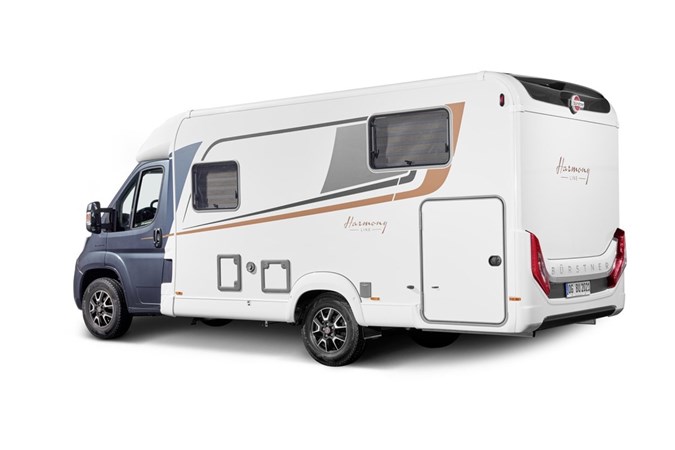
Advantages
Versatility is key to the appeal of a coachbuilt motorhome – there’s something for every need. There are small, comfortable ones ideal for a couple to go on a quick getaway, massive ones that can fit the whole family, no-frills ones that are very affordable and deluxe ones kitted out like a swanky apartment.
Coachbuilt motorhomes have a lot more usable space than an equivalent van conversion. They generally have a better equipped kitchen, bigger washroom, more storage space and more comfortable seating. They also tend to have a screened-off master bedroom at the back of the vehicle.
The bodies are built from highly insulating fibreglass or ABS plastic sheets, so winter travel is more comfortable. Most of the latest coachbuilts are stuck together with adhesives rather than screws and bolts, so are less prone to leaks.
Disadvantages
The extra width of a coachbuilt motorhome can be problematic when manoeuvring and negotiating tight gaps. But if the mirrors fit through, the body will. Many have long rear overhangs to take account of, and height-restricted car parks are a no-go. Performance will be blunted somewhat by the bulky body.
The joins between the body and cab, and those between the body panels, require a certain amount of maintenance to make sure the seals are in good condition. You’ll notice draughts and leaks if they fail.
While the cab seats can be swivelled to face the lounge, they rob what could otherwise be useful living space. And getting into and out of the overcab bed isn’t dignified.
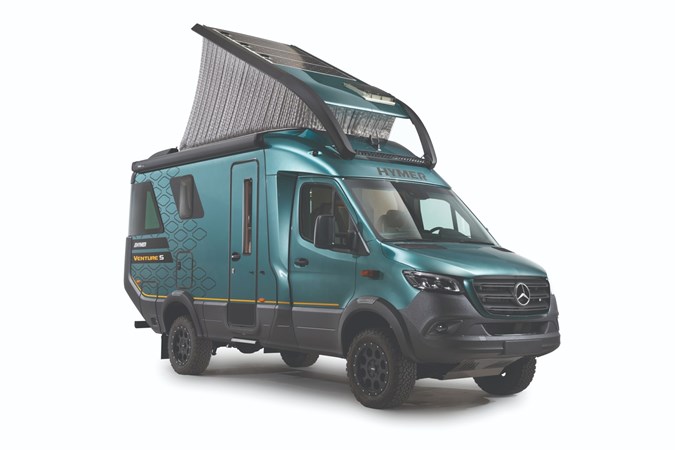
A-Class motorhomes
Pros:
- Most efficient use of space
- Better insulation
- More cohesive styling
Cons:
- Priciest to buy and run
- Often weigh over 3,500kg
A-Class motorhomes are the most sophisticated and expensive type. Also known as fully integrated, they feature an entirely bespoke body on the base vehicle’s chassis and basis cab structure. Usually, the only part of the base vehicle you can still see is the dashboard.
While there are some smaller two- and four-berth A-Class motorhomes under 3,500kg GVW, most are hulking-great things that sleep at least six. With that many beds, the vehicle is likely to use a heavier-duty chassis, typically a 4-ton Fiat Ducato, 5-ton Mercedes Sprinter or 7-ton Iveco Daily. The very biggest are based on lorry chassis. High-spec base vehicles are usually used, featuring the most powerful engine, an automatic gearbox and full air suspension.
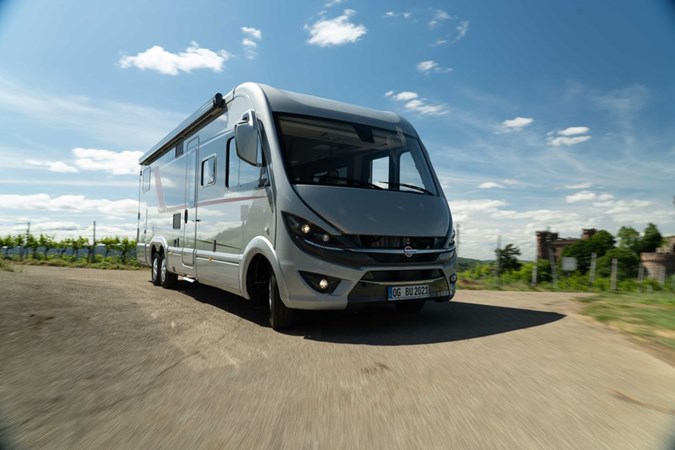
Advantages
If you value space above all else, an A-Class motorhome is the way to go. They’re a bit wider than coachbuilts and have a full-width cab, significantly increasing both the physical and psychological space in the vehicle.
That means there’s often room for features like a big-screen TV, full-size fridge-freezer, washer and drier, separate shower room and a toilet cubicle. They also have a vast amount of storage space, sometimes including a ‘garage’ at the back that, in some cases, is big enough for a small car. Some are so comprehensively equipped and luxuriously finished they’re like travelling in a Presidential suite.
The layout is quite versatile, as well. A typical six-berth A-Class will have a walled-off master bedroom at the back, a double sofa bed in the lounge and another double that lowers from the ceiling above the cab.
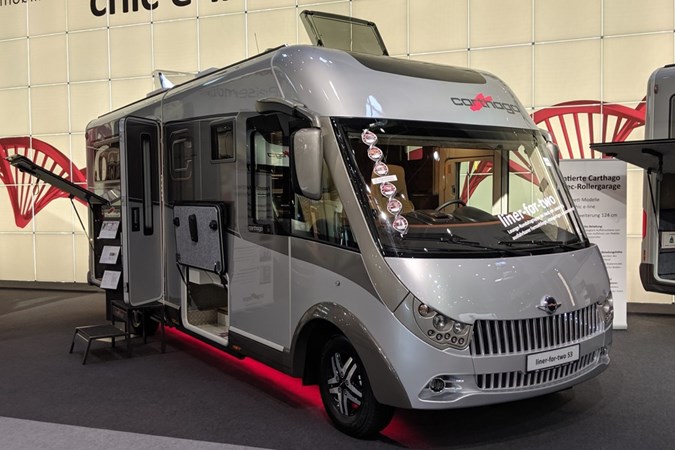
Disadvantages
No A-Class is cheap to buy new – a six-berth will cost at least £100,000 and you can easily spend quarter of a million or more. The bodywork can be expensive to repair; windscreens are usually bespoke and replacement can be difficult.
The sheer size of an A-Class means driving them takes some getting used to, especially as the driver’s seat often feels a very long way from the front of the vehicle. Parking needs planning and you may have to pay for storage when the vehicle isn’t in use. Ferry crossings will be more expensive.
Weight is the big issue with A-Class motorhomes, though. Manufacturers are introducing more models that weigh less than 3,500kg, but they don’t have much payload capacity. To drive a bigger, heavier A-Class, anyone who got their driving licence after 1997 will need to upgrade. Unless they’re a truck driver…
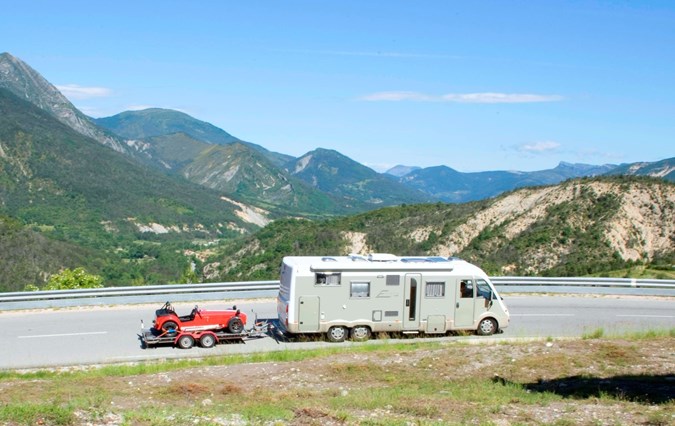
FAQs
-
What do you need to consider when buying a motorhome?
Taking budget out of the equation, there are three main things you need to consider when buying a motorhome: how many beds you need, what features you want and how much floor space you want.
Answering those questions will help you decide which body style to get. For instance, if you only need two berths, a shower and a toilet, and aren’t fussed about floor space, a van conversion will suit. Wanting four berths, a separate toilet, an oven and enough space not to feel cramped will point you towards a coachbuilt. If you want a true home away from home, only an A-Class will do.
You may also have a preference for which model of chassis you want, and you may like a particular motorhome builder’s style. Build quality varies significantly – how well finished door edges and wiring cut-outs are good indicators.
Chassis come with full manufacturers’ warranties and can be serviced at any of their dealers. Repairs to the motorhome elements usually require a specialist. If you intend to drive in Europe a lot, choosing a continental motorhome builder is sensible because there’s more back-up available should anything go wrong.
Beyond those basic considerations, choosing a single motorhome to buy can be really difficult because there’s just so many to choose from. Fortunately, there are a number of dealers around the UK who work with just about every builder, such as Brownhills, who can help you work through the options to find the right motorhome for your needs. -
What is the best month to buy a motorhome?
Summer – June to September – is the best time to buy a new or used motorhome. Most people make their travelling plans during winter and spring and buy a new motorhome at that time. As a result, waiting times are longer and used prices a bit higher. Wait until summer and the factories are less busy and the reduced demand supresses second-hand values.
-
What is the best type of motorhome to buy?
That’s a really difficult question to answer. Each has their own pros and cons, and each has a set of devotees. If you have no preference, a coachbuilt is probably the best compromise between space, facilities and price. But, if you can afford it, an A-Class will give you the best traveling experience.
-
What about American RVs?
If you think of an American RV, you're probably picturing something the size of a coach. Indeed, many of them – built by the likes of Winnebago, THOR and Four Winds – are that big. RVs come in both coachbuilt and A-Class form, some them on a similar scale to European products. But the biggest are so vast, they become their own thing. It's possible to spend seven figures on one, as well.
There are some European motorhomes that are as big – and expensive – based on three-axle, 26-ton lorry chassis. STX is perhaps the best-known builder. -
What does RV mean, anyway?
RV has no strict definition beyond it standing for 'recreational vehicle'. But we suggest that a motorhome becomes an RV when it has sections that slide out to create more space.
Just so you know, we may receive a commission or other compensation from the links on this website - read why you should trust us.


